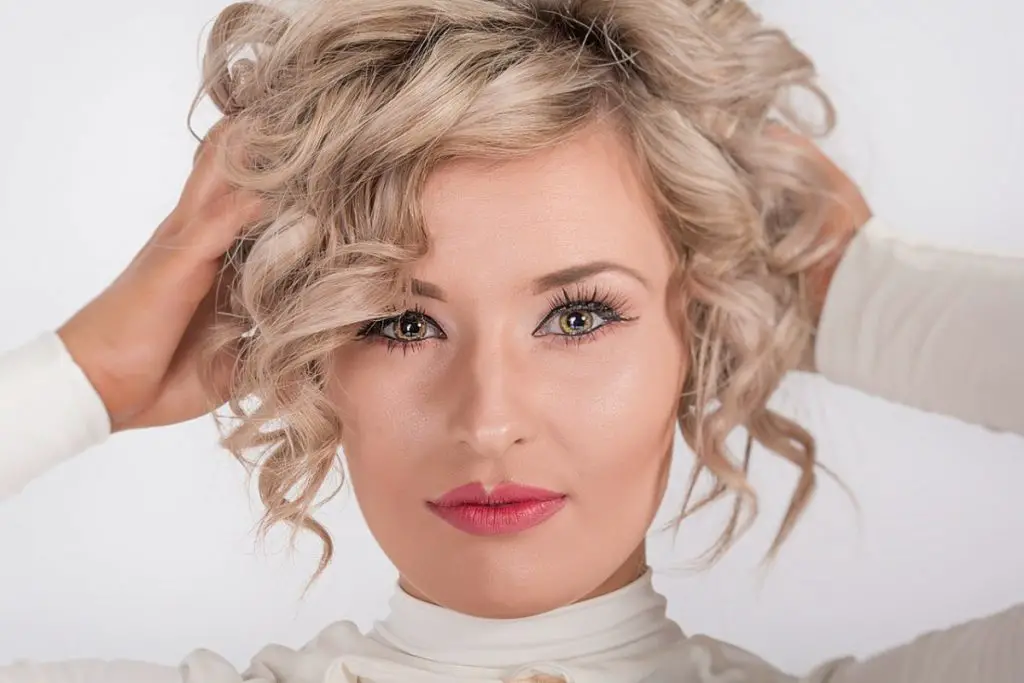
Science cannot entirely explain hair color, but we can change our natural hair color or add highlights. In the past decade, a wave of newborns with highlights has left many expecting parents wondering if their baby could be born with multiple hair colors. Is it possible to be born with highlights, or is this a rare occurrence?
It is possible to be born with highlights and is not uncommon. The production of cells and dominant and recessive alleles determines a person’s natural hair color. These processes can become unbalanced and lead to multiple hair colors.
Since a newborn with natural highlights is rare, this article will explore the scientific process that determines imbalances in hair color and what can lead to the shocking discovery of a baby born with highlights.
The Science Behind Pigment: The Two Types of Melanin
After the conception phase, many processes occur that specify the physical characteristics of a baby. Although scientific research about hair color is on-going, some genetic occurrences determine the baby’s hair color. Let’s look at the process of how and why natural highlights occur.
One process involves the genes that a baby will inherit through the distribution of alleles, which can be either dominant or recessive. Most of us take genetics at the surface value, which states that dominant genes correspond to dark hair colors, and recessive genes correspond to lighter colors.
The science behind hair color is not that simple, because many alleles are competing with one another to determine hair color. This is why many parents are surprised when a baby is born with light-colored hair, even if the parent with the dominant gene has dark hair.
You cannot expect the dominant and recessive genes to produce a definite outcome. To gain a better perspective about the science behind hair color, you have to look at the production of pigment and the two main melanin types that produce it.
Eumelanin
Eumelanin is a type of melanin that produces brown and black pigment in hair follicles. A fetus that receives more eumelanin pigmentation during genetic makeup will likely have black or brown hair.
Pheomelanin
Pheomelanin is a melanin type that corresponds to red or yellow pigments in the hair follicles. Most babies born with red or blonde hair likely received an influx of pheomelanin.

Fluctuations in the MC1R Gene
Hair colors fluctuate between brown, black, red, and blonde. These variations are all regulated by the MC1R gene. It dictates the division of eumelanin and pheomelanin done by the melanocortin one receptor.
If the receptor is activated, eumelanin is most likely to be released, while pheomelanin is released if it is not. This is why there are more dark-haired individuals than red or blonde-haired.
In the middle of the processes, the division of melanin can go into haywire. This explains why some are being born with a mixture of dark and light hair.
Take a look at this video for a breakdown of what determines hair color at birth:
Do Polymorphisms Cause Natural Highlights?
A polymorphism is a genetic variation wherein the DNA sequence receives a slight imbalance during the distribution of cells and components. Polymorphism would likely result in albinism, which is a condition that arises from a lack of pigmentation.
It is inaccurate to call natural highlights as polymorphism since the production of pigmentation was successful. Gene mutations often produce drastic effects. Natural highlights seem like a rare trait but not classified as a mutation.
But there is a reason why slight polymorphism is considered the primary culprit for causing highlights at birth. This is because of the MC1R gene, and how it performs the targeted pigmentation is released.
This common variation polymorphism is less severe than a regular polymorphism in that inconsistencies are released during melanin production as opposed to the outright absence of pigmentation.
An MC1R polymorphism occurs in people who are born with red or blonde hair. Eumelanin was not produced at a substantial rate, causing sudden hair color changes at the early stages of human development.
The absence of eumelanin would not account for babies that are born with dominant dark hair with faint highlights of brown or even blond; therefore, this is likely not a cause for natural highlights.
What Causes Natural Highlights?
There is not enough scientific research available to fully explain how a person can be born with highlights. One overriding theory in genetics is that more genes and DNA processes play an unknown role in determining factors related to hair pigmentation.
It is not certain that a baby born with natural highlights will maintain them throughout their childhood and old age. People regularly lose shades of hair color as they age.
The reason behind this could be the reverse of the natural process. Instead of developing lighter shades of hair color later in life, the process could start at birth and work backward. Natural highlights could signify that your baby’s hair is versatile. Expect the color to change rapidly throughout their childhood.
If we base it solely on science, it can be said that the reason behind natural highlights is due to a possible imbalance during the regulation of pigmentation.
A baby may have already received an influx of eumelanin genes that was interrupted by an imbalance that activated a slight release of pheomelanin. There could have been a slight disruption in the cycle of the dominant and recessive genes in determining a baby’s hair color.
While scientific research about why some babies are born with highlights is being conducted, all we have is the fact that this phenomenon is real. Hair pigmentation is still vaguely explained.
Therefore, it should not come as a surprise if a baby is born with highlights.
Conclusion
We are all aware that a person can be born with natural highlights. The science behind why this occurs has yet to be explained. The release of eumelanin and pheomelanin will determine the color of a person’s hair.
The answer to why some are born with highlights lies in distributing the two types of pigments. Until there is an exact explanation, enjoy your baby’s beautiful and unique hair.



